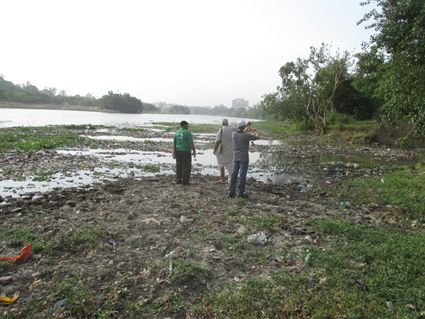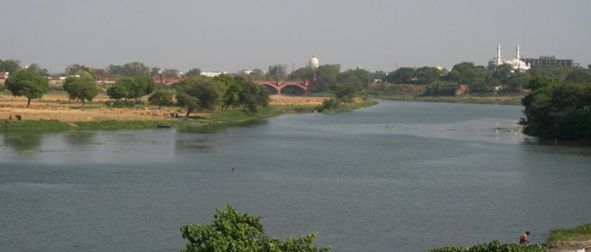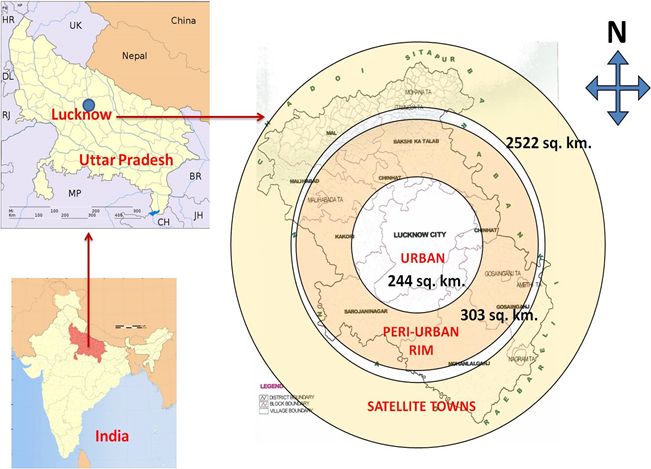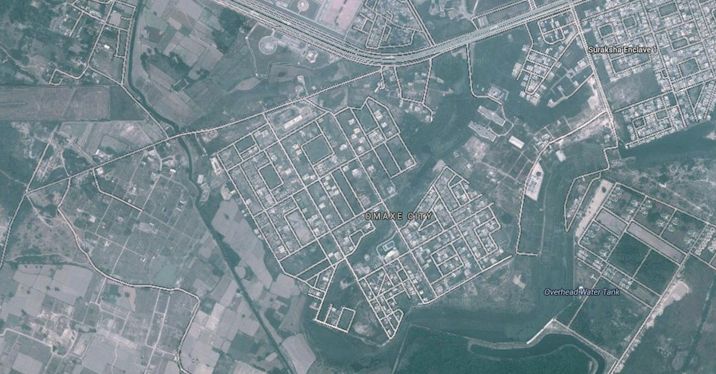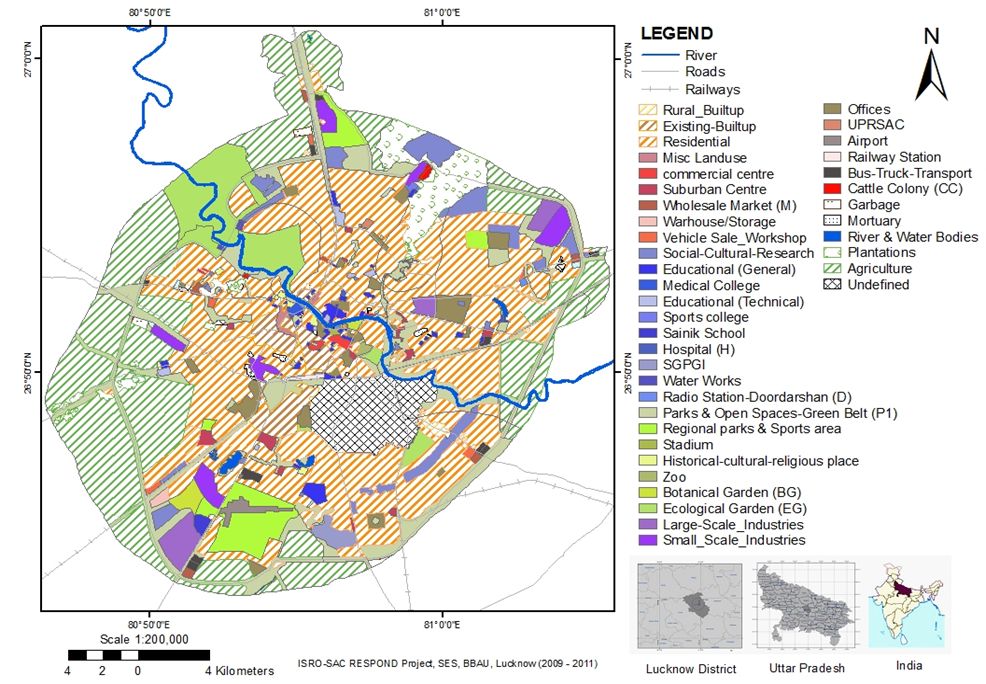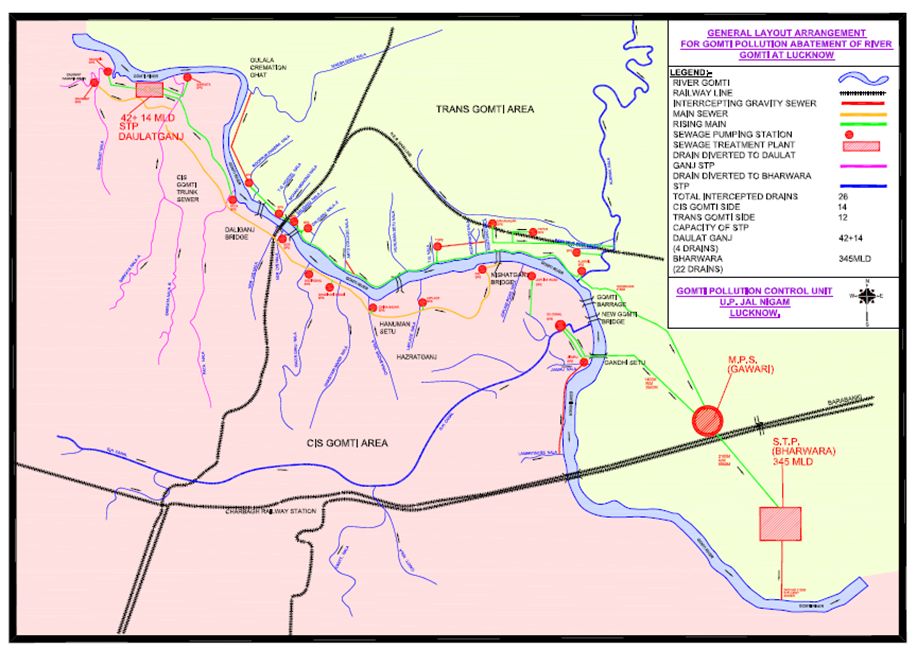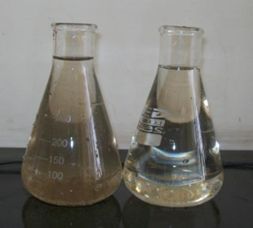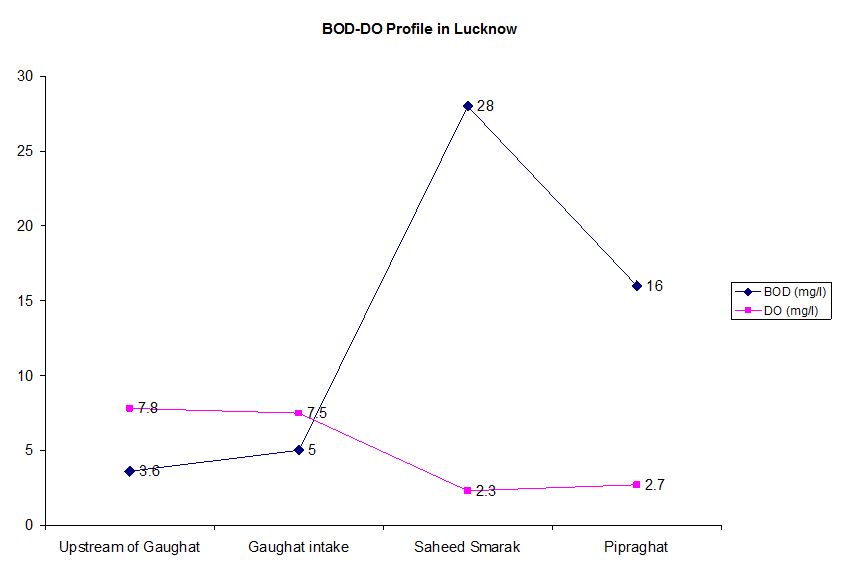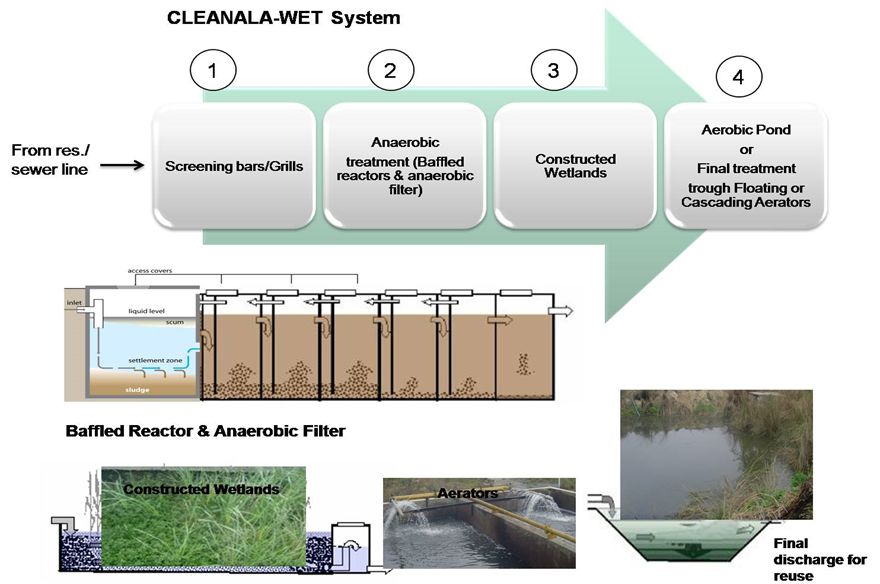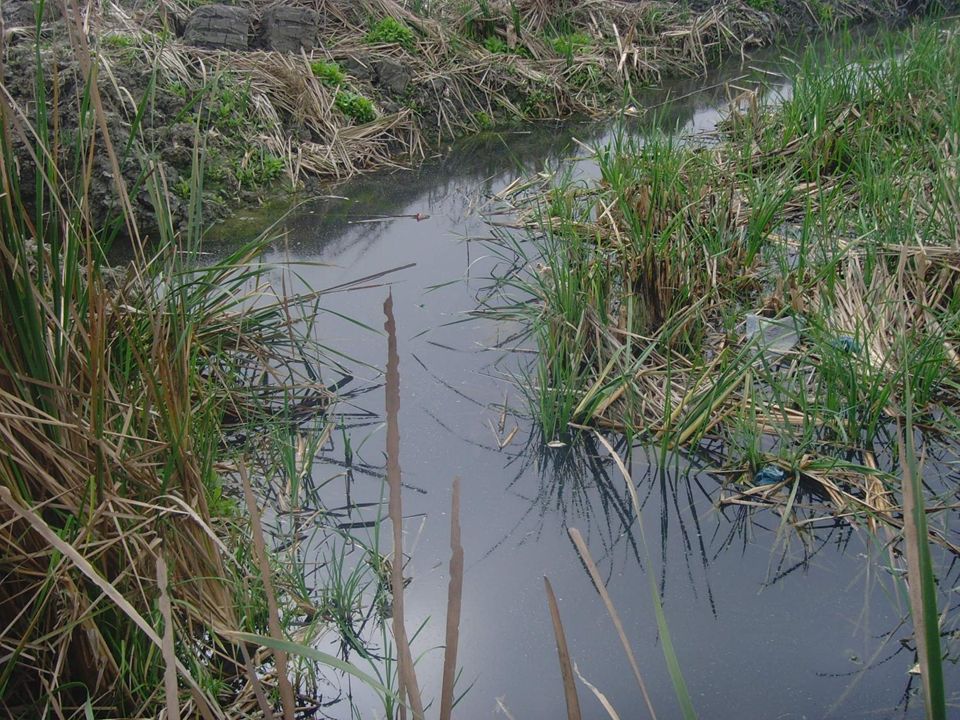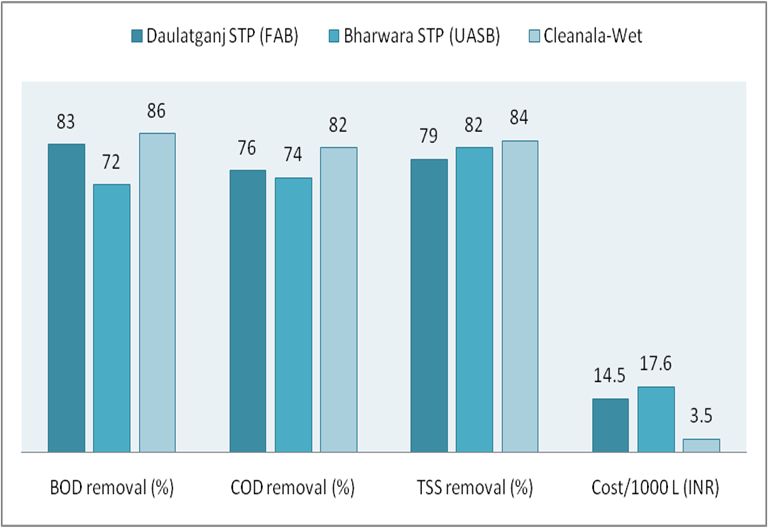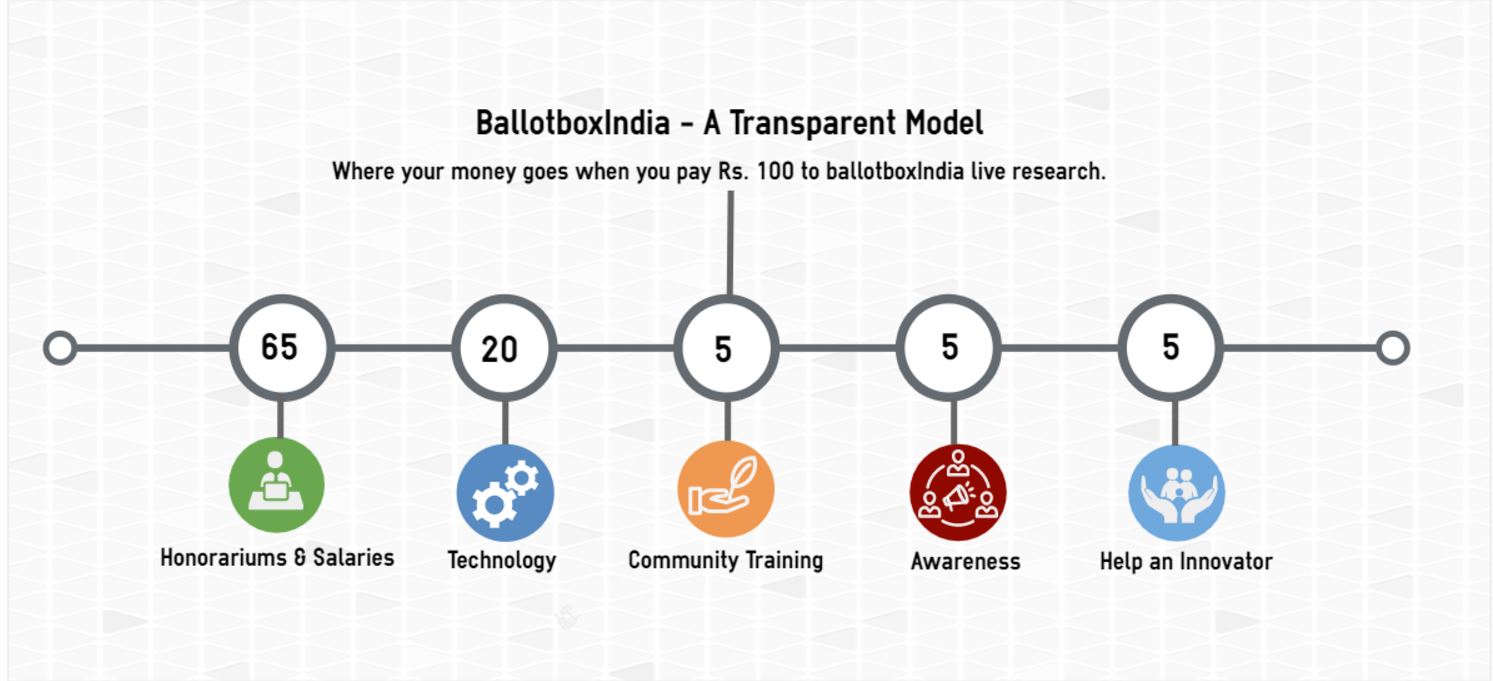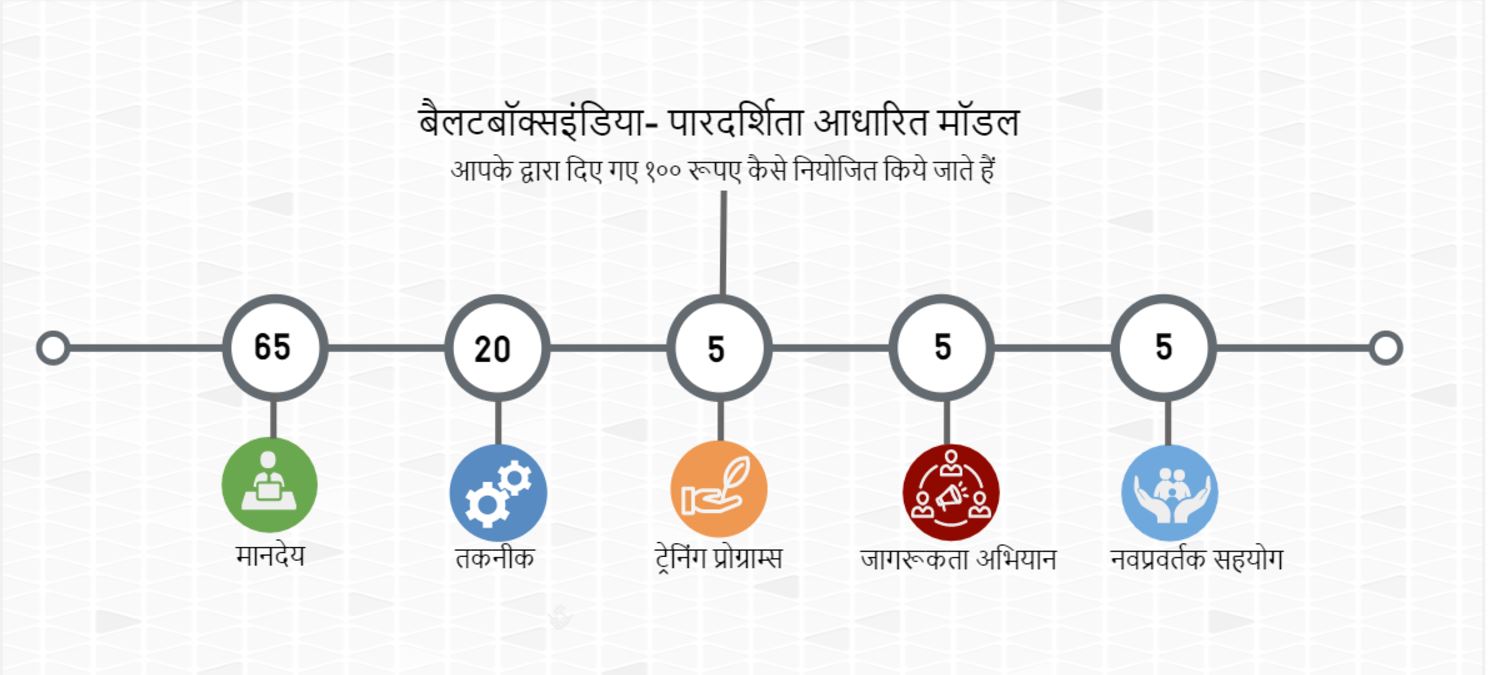The current situation of wastewater management in developing countries is largely inadequate. Cities and towns are facing twin problems of:
- improper and inadequate sewage treatment, and
- lack of suitable technologies
The untreated or partially treated wastewater ultimately makes its way to the water bodies
- causing serious degradation of the ecosystem and the environmental health
More than half of the world’s major rivers are seriously depleted and polluted
- Reason is over-allocation and pollution from wastewater
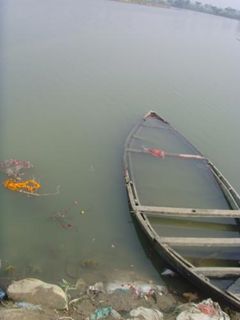
In the business-as-usual scenario:
- resources are insufficient,
- urban local bodies have largely failed to provide capacity,
- and traditional techniques and solutions are
- not practical,
- too expensive and energy intensive,
- or simply unsystematic.
- peri-, semi-urban and rural settlements are still outside the network
- unable to treat wastewaters
- Centralized systems are costly
- Requires huge operation and maintenance infrastructure
- Do not make sense for peri-urban, smaller settlements!
The Present status of Waste water management in India:
An estimated 38354 Million Litres per day(MLD) sewerage is generated per day in major cities of India, but sewerage treatment capacity is only 11786 MLD. Only 60% of the industrial waste water, mainly large scale industries, is treated. Performance of state owned sewerage treatment plants, for treating municipal waste water, and common effluent treatment plants, for treating effluent from small scale industries, is also not complying with the prescribed standards.
Status of Municipal
Wastewater Generation and Treatment Capacity in Metropolitan Cities and Class
II Towns of India
• Out of 35 metropolitan cities (million plus
cities), the sewage treatment capacity exists for only 51% of total sewage
generated.
• Total Treatment Capacity in Class II Towns:
Only 8% of the total sewage generation
A significant volume of wastewater is not subjected to any treatment and is ultimately discharged into surface water bodies (mostly rivers) leading to deterioration of water quality.
About the Study Area
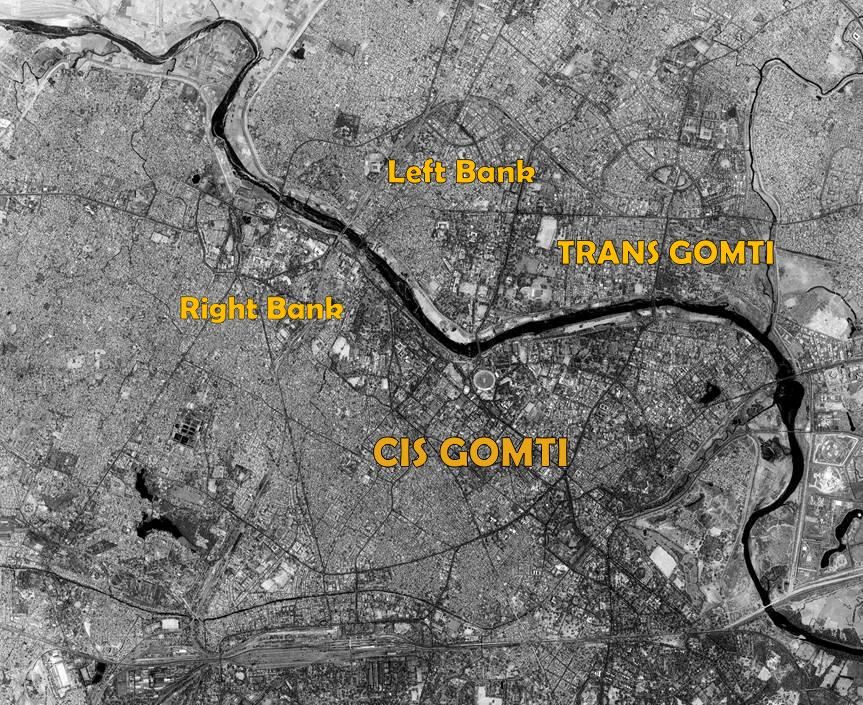
Around 85% of the land-area of Lucknow City is situated on the Central Ganga alluvial plain, and stretches across both banks of the Gomti River.
• Gomti
River flows from NW to SE through
the heart of the city.
• Cis-Gomti
side are comparatively lower
than the areas on Trans- Gomti side.
• 26
drains join the river, 14 drains from cis-Gomti and 12 drains from trans-Gomti
side.
• Out
of 14 cis-Gomti side drains, 12 drains
are located in the upstream and 2 are located into downstream of
Barrage.
• All
of the 12 Trans-Gomti drains merge into river Gomti in the upstream of Barrage.
Wastewater generation:
• The
combined discharge of the 26 drains was estimated for the year 2004 as 390 MLD
• Currently it is estimated to be in the range
of 425 - 450 MLD.
• This does not include areas which are not
connected by sewerage systems.
Operational STPs
|
STP |
Capacity |
Technology |
Drains |
Length of
trunk and branch sewer lines |
|
Daulatganj
STP |
42+14 = 56
MLD |
FAB |
Wastewater
from Gaughat, Sarkata, Pata, Nagaria - treated wastewater is discharged in
Gomti river through Sarkata Nala |
339 km |
|
Bharwara
STP |
345 MLD |
UASB |
860 km | |
|
401 MLD |
|
DISTRICT |
WORKS (EXISTING & PROPOSED) | |||
|
Sewer |
SPS |
STP |
Location of ST.P. | |
|
I |
Complete Network |
1 |
42+ 14 MLD |
Daulatganj |
|
II |
Complete Network |
1 |
108 MLD |
Khwajapur |
|
III |
Complete Network |
3 |
345
MLD Bharwara | |
|
IV |
Complete Network |
2 |
270 MLD |
Mastemau |
|
Total |
779 MLD |
|
|
Estimated Cost as per C.D.P. ( Rs. Crore ) Capital cost: About 4 million Rs per MLD of treatment
capacity |
: |
District – I 222.86 District – II 475.71 District – III 428.80 District – IV 927.26 Sub Total 2054.63 Contingency @ 3% 61.64 Total 2116.27 |
Aerial
View of 345 MLD STP (UASB) at Bharwara
Sample of water of Bharwara STP(before and after treatment)
Bharwara STP water Quality details
|
Parameters |
Inlet |
Outlet |
% Removal |
|
pH |
7.5 |
7.8 |
--- |
|
EC |
1.07 |
1.05 |
1.86 |
|
TS |
970 |
750 |
22 |
|
TDS |
566 |
502 |
11.30 |
|
TSS |
360 |
66 |
81.66 |
|
Alkalinity |
490 |
447.5 |
8.67 |
|
Nitrate |
105.56 |
33.07 |
68.67 |
|
Nitrite |
0.2174 |
0.09212 |
57.63 |
|
Total Hardness |
72 |
57.6 |
24.21 |
|
Chloride |
77.97 |
76.97 |
1.28 |
|
Phosphate |
2.7 |
1.4 |
48.14 |
|
DO |
--- |
3.65 |
--- |
|
BOD |
180 |
42 |
76.6 |
|
COD |
320 |
122 |
61.87 |
|
Sulfate |
78.72 |
64.41 |
18.17 |
Daultaganj STP water sample(before and after treatment)
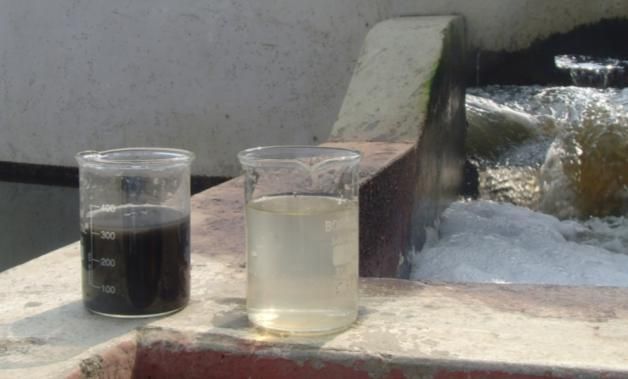
Daultaganj water quality details
|
Parameters |
Inlet |
Outlet |
% Removal |
|
pH |
7.4 |
7.7 |
--- |
|
EC |
1.10 |
1.06 |
3.63 |
|
TS |
980 |
796 |
18.77 |
|
TDS |
680 |
495 |
27.20 |
|
TSS |
318 |
47 |
85.22 |
|
Alkalinity |
467.5 |
415 |
11.22 |
|
Nitrate |
38 |
35 |
7.89 |
|
Nitrite |
0.1380 |
0.0323 |
76.59 |
|
Total Hardness |
76 |
54 |
28.94 |
|
Chloride |
111.65 |
110.46 |
1.063 |
|
Phosphate |
2.9 |
1.5 |
48.27 |
|
DO |
1.8 |
6.43 |
--- |
|
BOD |
94 |
20 |
78.72 |
|
COD |
240 |
72 |
70 |
|
Sulfate |
68.34 |
63.72 |
6.76 |
|
May 2012 | |||
|
Inlet |
Outlet |
Std. Uncertainty (±) | |
|
DO |
0.00 |
6.4 |
--- |
|
BOD |
90.0 |
16.0 |
20.4 |
|
COD |
204.7 |
27.6 |
4.06 |
|
TSS |
100.0 |
48.0 |
0.345 |
|
June 2012 | |||
|
Inlet |
Outlet |
Std. Uncertainty(±) | |
|
DO |
0.00 |
6.5 |
--- |
|
BOD |
90 |
23.0 |
20.4 |
|
COD |
148.8 |
64.0 |
4.06 |
|
TSS |
56.0 |
40.0 |
0.345 |
|
August 2012 | |||
|
Inlet |
Outlet |
Std. Uncertainty(±) | |
|
DO |
0.8 |
6.2 |
--- |
|
BOD |
85 |
29 |
20.4 |
|
COD |
196 |
82.3 |
4.06 |
|
TSS |
126.0 |
48.0 |
0.345 |
|
September 2012 | |||
|
Inlet |
Outlet |
Std. Uncertainty(±) | |
|
DO |
0.00 |
6.0 |
--- |
|
BOD |
87.5 |
28 |
20.4 |
|
COD |
189.9 |
89.15 |
4.06 |
|
TSS |
146.0 |
62.0 |
0.345 |
Possible reasons for inadequate waste water management:
India lacks in sufficient waste water management system. Cities and towns are facing inadequacies/problems due to following:
1)Improper and inadequate sewerage treatment facilities
2)Lack of suitable technologies
Quality is still a concern
DO-BOD profile in Lucknow stretch of the Gomti River
• No feasible mechanism of stopping wastes
going to the drains
• A lot of silt and debris go into the sewer
system which is detrimental to its life and proper function.
- Removal of solid wastes from the drain at the pumping station is still manual
- sewage is by-passed to River Gomti when PS doesn’t work, or when flow exceeds
- Most of the branch and old trunk sewers have become defunct – natural drains are used as carriers of wastewater.
- 400 m3/hr of methane production at Bharwara STP: still not a reality!
- Treated wastewater from Bharwara STP is disposed into river Gomti. It can be disposed into Indira canal for Irrigation.
- Large quantities of storm water causes flooding and hydraulic overloads at treatment plants.
Possible Consequences:
With several million litres waste water going into river systems per day, imagine what would happen to them. The untreated or partially treated waste water makes it to the water bodies, causing serious trouble to ecosystem and to the environmental health. Pollution from waste water is a reason that more than half of the world's rivers are either seriously depleted or depleted.
What is Cleanala Wet System?
Cleanala wet system is a technology based low cost approach suggested by the environmentalist Dr. Venkatesh Dutta to decentralize the system and treat waste water in a developing city.
Cleanala-Wet System is based on four treatment systems:
- sedimentation and primary
treatment in sedimentation ponds, septic tanks, fully mixed digesters
- secondary anaerobic treatment
in baffled reactors (baffled septic tanks) or fixed-bed filters
- secondary and tertiary
aerobic/anaerobic treatment in constructed wetlands (sub-surface flow filters)
- secondary and tertiary aerobic/anaerobic treatment in ponds
image: DEWATS using low cost technology
Benefits of Cleanala-Wet Systems
- small spatial and carbon footprints, greatly reduced environmental impact
- do not discharge effluent into waterways
- Specific local economic and social situation is taken into consideration
- low control and maintenance requirements
- should be perceived as being complementary to other centralized and decentralized wastewater-treatment options
What is Essential?
- There is a substantial capacity for both energy and resource efficiency in the need for newer technologies required to treat urban and peri-urban wastewater
- ensuring the reliability and safety of recycled water systems
- increasing community confidence in the future of water supply
- On-site adaptations – one size does not fit all
- Hybrid systems or a combination of secondary on-site treatment and tertiary co-operative treatment is also possible
Some possible constraints on replication and wide scale implementation
|
Lack of management expertise |
lack of capacity to plan, design, implement
and operate decentralized systems |
Lack of knowledge and skills available at the
local level |
|
Institutional constraints |
lack of a suitable policy framework that encourages local bodies
innovation in the decentralized approaches |
Lack of coordination between government, the private sector or developers and civil
society members |
|
Economic constraint |
Operation and maintenance has not been
“internalized” by members of households and communities |
Lack of sufficient willingness of communities
to pay for the services in the long run |
Conclusion
- The current technology of treating sewage through large-scale centralized plants have proven to be costly, complex and are failing to meet the expectations
- There is an urgent need to rethink and rework the overall wastewater management scenario
- The new paradigm of water management should include decentralized wastewater treatment, water efficiency and conservation including recycle and reuse options
What are we looking for:
Waste water treatment is a major concern in our communities, with less than 20% of our households connected to a sewerage system of which even a lesser number of STP working on a mega centralized way actually working i.e. cleaning the waste water, the scope of improving the situation is massive. During our various researches we have seen mixing up of storm water with sewerage water which is again a major concern and can lay STPs defunct. A decentralized way to clean our sewerage systems can go a very long way. Its cost effective, doesn't create a single point of failure, as we have seen during or Gomti River Research, where Asia's biggest STP was simply spewing tons of waste water directly into the river Gomti without treatment. It had a cascading effect on planning leading to massive concreting of natural drainage system and in the end the whole system built over 100s of crore is lying defunct. We are looking to change this situation.
If you know something :
Please click Connect button below and join this research.
If you know someone who can contribute:
If you know someone who is either an expert on waste water management or knows anything or can contribute in some form, Kindly inform and ask them to contact us at : coordinators@ballotboxindia.com or fill "Contact a coordinator" form by clicking the buttons on this page.
If you want to work for us and contribute in your community:
If you have time, skill, aptitude and expertise in the field of waste water management , ballotboxindia.com is the right platform to not only solve similar problem in your community, but also build a social and professional brand to help you grow. To join click Connect button below and we will be in touch.
 tag on profile.
tag on profile.
